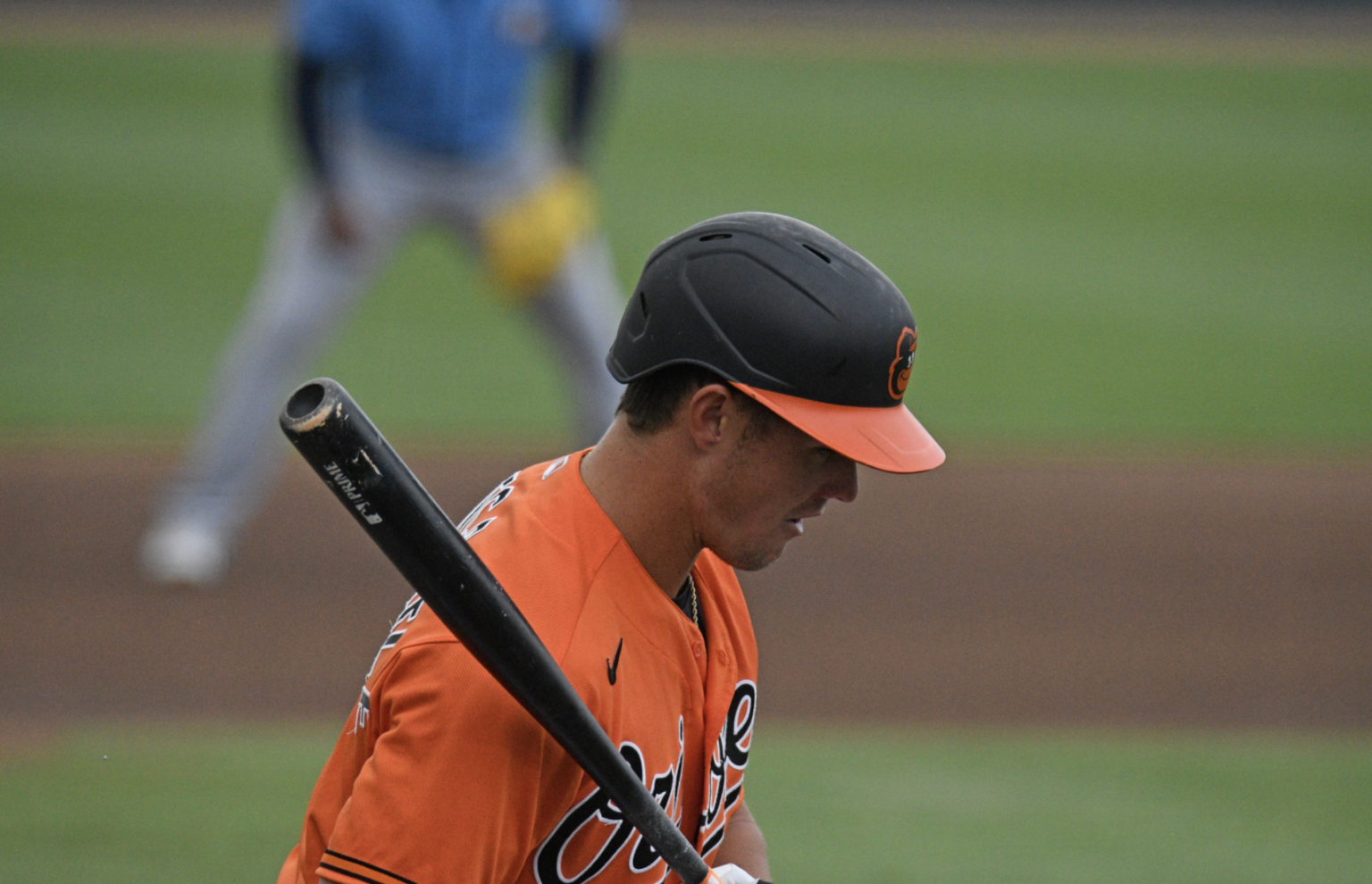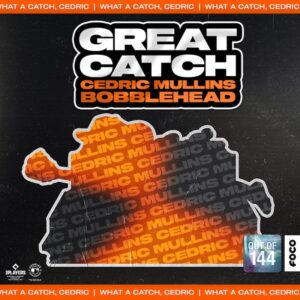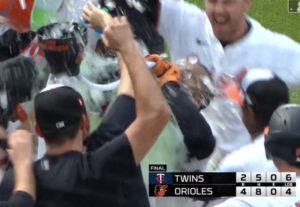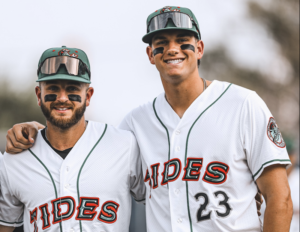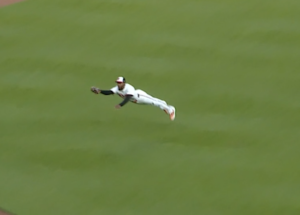Stock Up
John Means
Means has carried his success from the end of last season into this year. Entering May 2nd, only three American League starters have better ERAs than Means this season, and his 1.8 bWAR is tops in MLB among pitchers. His 1.70 ERA, .838 WHIP and 27.3 K% are all career highs. Over his last 10 starts dating back to last season, Means is 5-1 with a 1.63 ERA. He has established himself as a true ace.
The aspect of Means’ game he’s improved upon the most is the effectiveness of his secondary pitches. Last season, opponents smashed his change-up, curveball and slider. This season, they’ve become elite pitches that complete his repertoire, which has also allowed him to throw them more than ever before.

Cedric Mullins
During an offseason where the organization’s outfield depth was the center of discussions, guys like Anthony Santander, Austin Hays and Ryan Mountcastle were who fans hoped — and planned — to see. Now, Santander is hurt, Mountcastle’s outfield time has decreased and Mullins’ defensive prowess has pushed Hays over to left field. Mullins was left for dead among the crowded crop of outfielders, but has now risen to the top.
His defense has always been stellar, but what Mullins is doing offensively is even more incredible when you consider he’s going left-on-left this season for the first time since high school. He leads all of MLB in hits as a left hander (34) as well as hits versus left-handed pitchers (16).
Comparing the Orioles’ leadoff man to his counterparts, Mullins leads American League center fielders in hits and doubles and is second only to perennial-MVP-candidate Mike Trout in both on-base and slugging percentage.
Cesar Valdez
Valdez’s change-up is flat out unhittable. The 36-year-old throws the pitch 81.8 percent of the time to the tune of a 33 percent whiff rate, and he’s used it to get the third strike on 12 of his 13 punchouts. According to Baseball Savant, Valdez has yet to allow a barrelled ball this season and ranks in the 84th percentile in chase rate. His six saves this season are tied for the AL lead.
In an interview earlier this season, Red Sox hitting coach Tim Hyers said Valdez was the pitcher his hitters talked about more than anyone.
“It’s almost like a unique curveball, because it gets to home plate and just dives,” Hyers said. “And at times, it can dive both ways. It can break in or break out.”
Orioles insider for MLB.com Joe Trezza wrote about Valdez’s changeup last week. He discovered that the pitch is actually more like five or six different pitches, and Valdez adjusts what it can do based on grips and arm angle.
Trezza first broke down the two different arm angles Valdez uses. Forty-five percent of his change-ups come from a more upright position, releasing the ball anywhere from 5.5 to 6 feet off the ground. This one looks more like a slider than a change-up, breaking more horizontally than vertically and averaging around 79 miles per hour. The second angle, and the one he uses about 55 percent of the time, is more of a sidearm slot. It leaves the hand at about one foot closer to the ground and usually comes in slower and breaks more vertically.
Although the two arm angles produce different velocities on their own, Valdez can still manipulate the speed of both pitches so hitters aren’t able to sit on either one. He throws just over half of his change-ups in the 78-80 mph range, and just under half in the 76-78 mph range, but can execute both of them out of either arm angle.
“He mixes these up in a very balanced way,” Trezza said on the Inside the Yard podcast last week. “The batter never knows which version is coming, where it’s coming from and how it’s going to move.”
Trey Mancini
After a rough start to the season, which was to be expected coming off a year away from the game, Mancini returned to 2019 form to close out the first month of the season.
Mancini’s slow start hit its lowest point on April 16, when an 0 for 4 game in a win over the Rangers dropped his batting average to .151. In his following 11 games to close out April, Mancini hit .341 with five extra base hits.
His return to form has aided an Orioles lineup that struggled somewhat without his bat in the middle of it. Here’s to hoping the first couple of weeks was simply shaking off the rust and that he’s now completely back and acclimated.
Stock Down
Ryan Mountcastle
After a promising debut season, the sophomore slump has hit Mountcastle hard.

Even after a successful 2020, we should have been able to see a regression coming looking back at some of his underlying metrics.
Mountcastle was extremely lucky when it came to his balls in play in 2020. His .398 average on balls in play, or BABIP, a season ago would have ranked second in MLB if he had qualified. And with poor exit velocity and launch angle numbers, that number was due to come down to earth, which it has, all the way to .277 this year. His one-base percentage was bound to fall as well. Mountcastle walked in 7.8% of his at bats at the major league level in 2020, much higher than his career walk rate of 3.7% throughout the minors. His mark of 4.2% this season is much more representative and indicative of his true plate discipline abilities.
However unlikely it may seem, Mountcastle actually isn’t chasing pitches any more than he did last year. In fact, he’s doing it slightly less. The number that has risen is the percentage of pitches he sees in the strike zone, up from 45.8% to 48.6%. Pitchers are challenging him, and he’s swinging and missing when they do at an alarming rate. His whiff rate ranks in the 10th percentile league wide with breaking balls and offspeed pitches giving him the most trouble (39.7% and 48% whiff rates, respectively).
Furthermore, the team has seemingly given up on the left field experiment with Mountcastle. He’s played there just once since April 15, and has mostly been rotating with Mancini at first base and designated hitter.
However, he’s begun to show some life as of late. He closed out April on a five-game hit streak, hitting .316 over that span, and has carried it over into the early parts of May. If he stays hot and the trend continues, Mountcastle will be back to 2020 form soon.
Second base
The position was set to be the biggest question mark coming into the season, and that’s proven to be true through the first month.
Brandon Hyde has tried a plethora of players at the position. Rio Ruiz’s 16 games played at second base leads the team. Ramon Urias trails just behind at 12 with Pat Valaika logging four. The three have combined to hit .139 through the end of April.
Second base is the clear weakest link in the O’s lineup. None of the three who have played there this season figure to be long-term options. I’d love to see Jahmai Jones, the 23-year-old who came back from the Angels for Alex Cobb, in Baltimore soon and be given the opportunity to take over the position for good. In five games at the alternate site last month against the Nationals’ alternate site squad, Jones hit .533 (8 for 15) with two doubles, two home runs and two walks.


